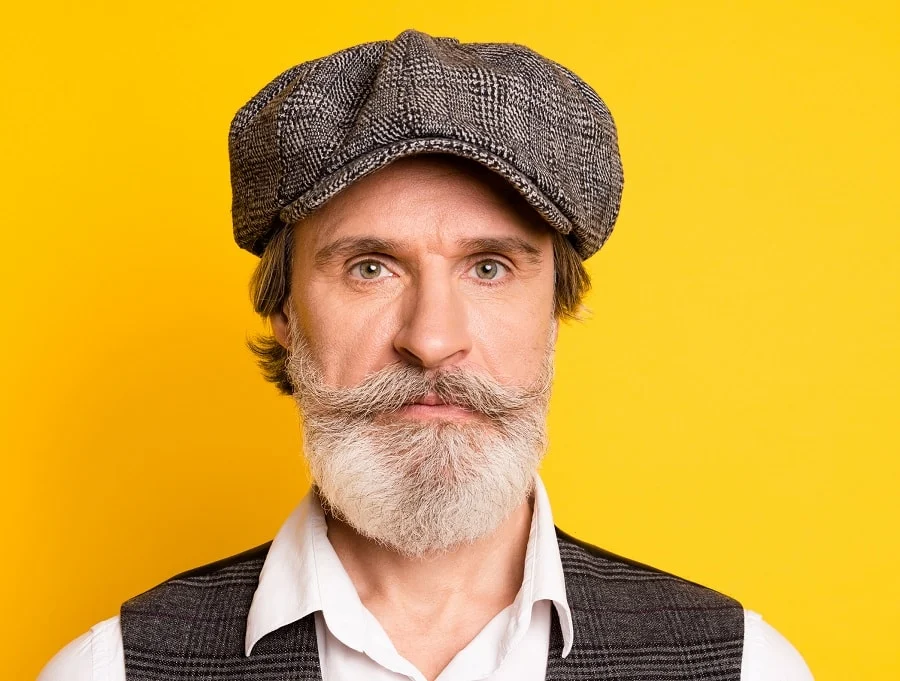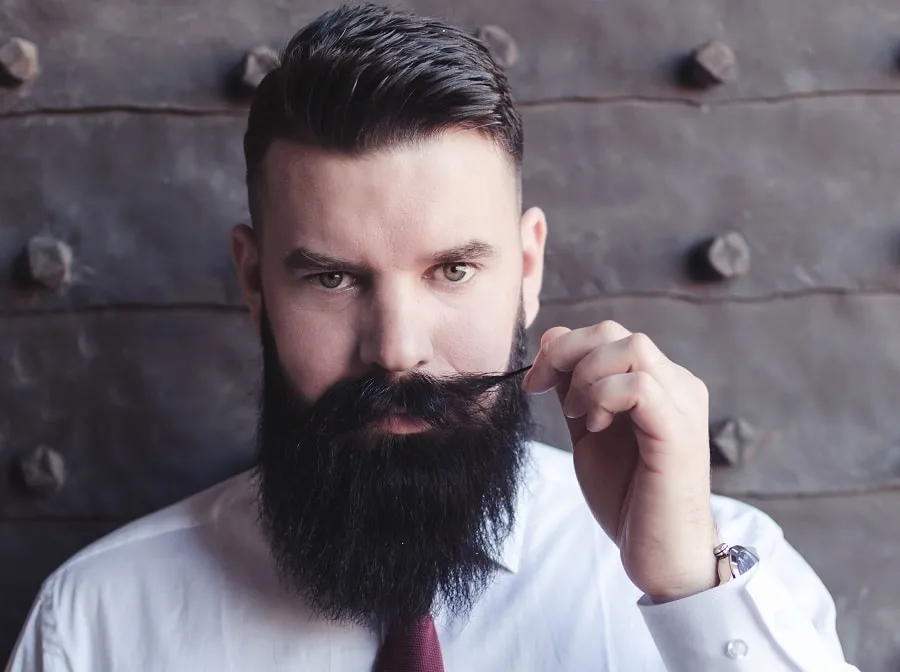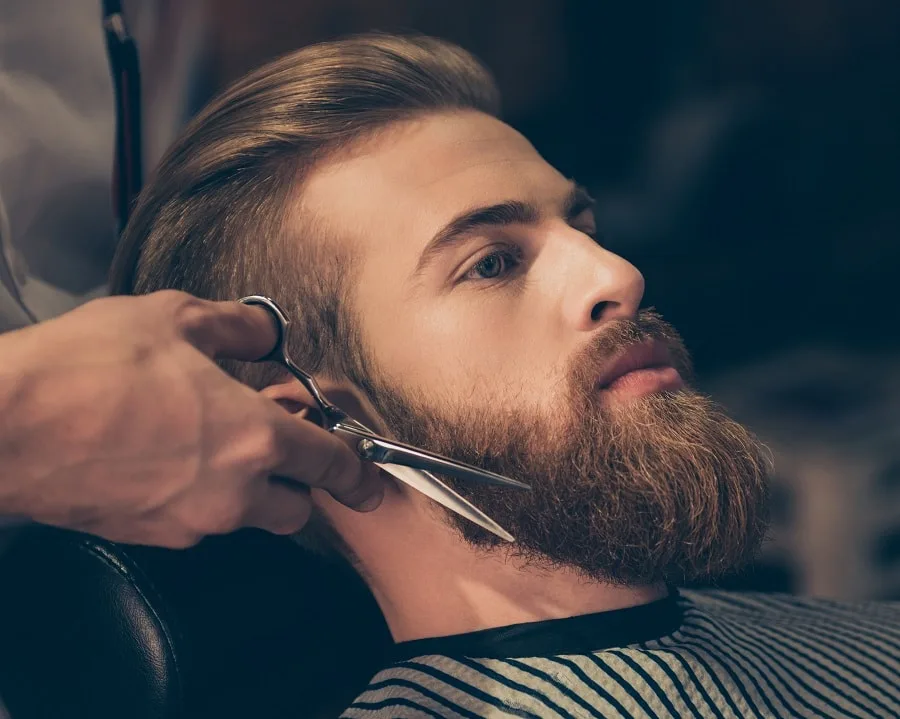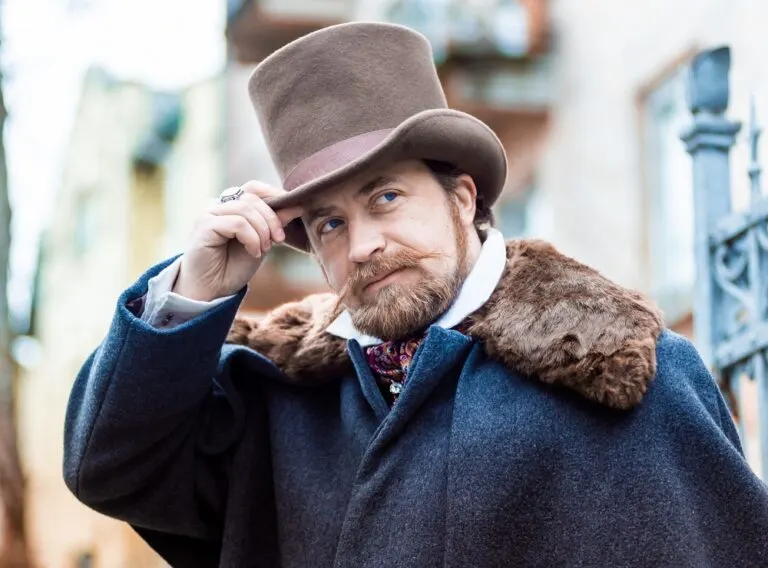Bandholz vs Garibaldi Beard: 9 Differences You Should Know
Beards have become a significant style statement for many men, representing their individuality. Two of the most popular beard styles currently are the Bandholz beard and the Garibaldi beard.
Both styles feature a full and bushy appearance, but they have some key differences. In this article, we will take a closer look at the Bandholz beard vs. the Garibaldi beard, highlighting their distinct characteristics, maintenance requirements, and cultural significance.
By the end of this article, you will gain a better understanding of which beard style is the right choice for you.
Garibaldi Beard

A Garibaldi beard is a style of facial hair characterized by a full, 15-20 centimeters (6-8 inches) long beard with a rounded bottom and a connected mustache. It is named after Giuseppe Garibaldi, an Italian general and politician. While the beard itself has a wild and untrimmed look, the mustache is maintained in a neat and groomed manner.
Bandholz Beard

The Bandholz beard, named after Eric Bandholz, is characterized by a long, full beard and a wide, disconnected mustache. It distinguishes itself from other beard styles by allowing unrestricted growth, resulting in a bold and distinctive appearance that showcases individuality and a commitment to embracing facial hair. It is typically longer than 8 inches, can be grown to any length, and has an unkempt, natural appearance.
Bandholz Vs.Garibaldi Beard: What Are the Differences?

Here are some distinct characteristics of the Garibaldi beard and the Bandholz beard, providing a deeper understanding of their differences in terms of length, shape, density, texture, maintenance, styling, cultural significance, popularity, and facial hair growth pattern.
Difference #1: Beard Length
- Garibaldi Beard: The Garibaldi beard typically grows to a length of 150mm – 200mm (6-8 inches), providing a noticeable and moderate beard length that falls between shorter and longer styles.
- Bandholz Beard: The Bandholz beard allows for unrestricted growth and has no specific length limitation. It can be grown to any desired length, often resulting in a longer and more prominent beard that makes a bold statement.
Difference #2: Beard Shape
- Garibaldi Beard: The Garibaldi beard features a rounded bottom shape, giving it a distinct and defined appearance. The beard is trimmed to maintain the rounded contour, creating a more polished and symmetrical look.
- Bandholz Beard: The Bandholz beard embraces a full and natural contour, allowing the facial hair to grow freely without strict shaping. This results in a more organic and less structured appearance, highlighting the individual’s unique facial hair growth patterns.
Difference #3: Beard Density
- Garibaldi Beard: The density of the Garibaldi beard can vary, but it generally has a fuller appearance. The beard is typically well-groomed and maintained, ensuring a denser overall look.
- Bandholz Beard: The density of the Bandholz beard can also vary, but it places more emphasis on natural growth patterns. This style embraces the inherent density and distribution of facial hair, resulting in a more diverse and textured look.
Difference #4: Beard Texture
- Garibaldi Beard: The texture of the Garibaldi beard can range from smooth to slightly coarse. It often appears more refined due to regular grooming and shaping.
- Bandholz Beard: The Bandholz beard exhibits a texture that can vary from smooth to more rugged and textured. It embraces the natural texture of facial hair, allowing for a more authentic and raw appearance.
Difference #5: Maintenance Requirements
- Garibaldi Beard: To maintain the Garibaldi beard, regular trimming, and shaping are required to retain its rounded shape and prevent excessive growth. This involves consistent upkeep and grooming to keep the beard looking neat and well-maintained.
- Bandholz Beard: The Bandholz beard embraces a more unkempt and natural appearance, requiring minimal maintenance. The emphasis is on allowing the facial hair to grow freely and naturally, with minimal intervention in terms of trimming and shaping.
Difference #6: Styling Options

- Garibaldi Beard: The styling options for the Garibaldi beard are relatively limited due to its rounded shape. However, variations in length and grooming techniques can still be explored to create a personalized look.
- Bandholz Beard: The Bandholz beard offers more versatility for styling and experimentation. With its long and free-flowing nature, individuals can explore different ways to shape, trim, and style their beard according to their preferences and desired aesthetic.
Difference #7: Cultural Significance
- Garibaldi Beard: The Garibaldi beard holds cultural significance as it is named after Giuseppe Garibaldi, an Italian historical figure known for his contributions to Italian unification in the 19th century. It represents a classic and timeless beard style.
- Bandholz Beard: It holds the commitment to personal expression and challenging societal norms. When Eric encountered a conflict with his job’s strict policy that prohibited facial hair, he decided to pursue his own path. He left the company to start the personal brand “The Beardbrand”. The Bandholz beard gained popularity through his advocacy for embracing the facial hair movement, which celebrates individuality and self-expression.
Difference #8: Popularity and Trend
- Garibaldi Beard: The Garibaldi beard has a historical significance and is known for its classic appeal. It has remained a popular choice among individuals seeking a well-groomed and refined beard style.
- Bandholz Beard: The Bandholz beard gained popularity as a more contemporary and adventurous beard style. It has become a trendy choice, especially among those who embrace a more natural and untamed look.
Difference #9: Facial Hair Growth Pattern
- Garibaldi Beard: It allows individuals to shape and groom their beard according to their unique growth patterns and desired style.
- Bandholz Beard: The Bandholz beard embraces the individual’s natural facial hair growth pattern. It encourages the beard to grow freely and in its natural direction, emphasizing the uniqueness of each person’s facial hair growth.
How to Choose Between Bandholz Beard and Garibaldi Beard?
When faced with the decision of choosing between the Bandholz beard and the Garibaldi beard, there are a few factors to consider. Here’s a guide to help you make the right choice:
- Evaluate your natural facial hair growth pattern. The Bandholz beard suits those with unstructured and free-flowing growth, while the Garibaldi beard complements rounded growth patterns. Opt for the style that aligns with your facial hair growth for a more effortless and cohesive look.
- Take into account your face shape. The Garibaldi beard, with its rounded shape, softens angular features and suits individuals with square face shapes. In contrast, the Bandholz beard, with its fuller and natural contour, adds length and volume, making it ideal for those with a rounder face. Here are some general recommendations based on face shape:
- Oval Face: Both the Garibaldi and Bandholz beard styles can work well with an oval face shape. Consider experimenting with different lengths and shapes to find what suits your personal style.
- Round Face: The bandholz beard can help create the illusion of a more elongated face.
- Square Face: Garibaldi beard, with its rounded bottom, can complement a square face shape by softening the angles and adding more volume to the chin area.
- The Garibaldi beard requires regular trimming and shaping to maintain its rounded shape, making it suitable for those who enjoy grooming routines. The Bandholz beard embraces a more unkempt and natural appearance, requiring minimal maintenance and appealing to individuals seeking a more effortless style.
Asses these factors and you can confidently choose between the Bandholz beard and the Garibaldi beard, selecting the style that best suits your unique taste and desired aesthetic.






